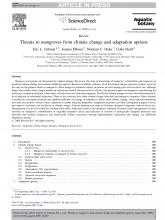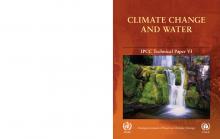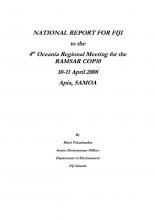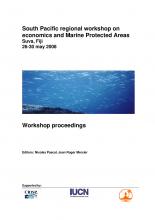Threats to mangroves from climate change and adaptation options


Climate Change Resilience, Island and Ocean Ecosystems
Available Online
Duke Norman C
,
Ellison Joanna
,
Field Colin
,
Gilman, Eric L
2008
Mangrove ecosystems are threatened by climate change. We review the state of knowledge of mangrove vulnerability and responses to predicted climate change and consider adaptation options. Based on available evidence, of all the climate change outcomes, relative sea-level rise may be the greatest threat to mangroves. Most mangrove sediment surface elevations are not keeping pace with sea-level rise, although longer term studies from a larger number of regions are needed. Rising sea-level will have the greatest impact on mangroves experiencing net lowering in sediment elevation, where there is limited area for landward migration. The Pacific Islands mangroves have been demonstrated to be at high risk of substantial reductions. There is less certainty over other climate change outcomes and mangrove responses. More research is needed on assessment methods and standard indicators of change in response to effects from climate change, while regional monitoring networks are needed to observe these responses to enable educated adaptation. Adaptation measures can offset anticipated mangrove losses and improve resistance and resilience to climate change. Coastal planning can adapt to facilitate mangrove migration with sea-level rise. Management of activities within the catchment that affect long-term trends in the mangrove sediment elevation, better management of other stressors on mangroves, rehabilitation of degraded mangrove areas, and increases in systems of strategically designed protected area networks that include mangroves and functionally linked ecosystems through representation, replication and refugia, are additional adaptation options.



